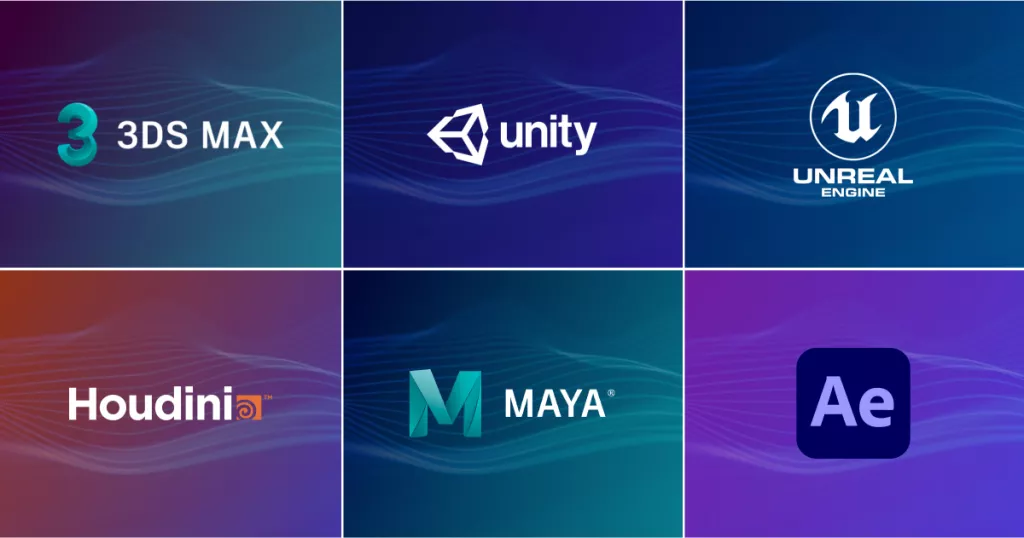The challenges of creating visual effects for mobile games
The global gaming market is growing at an impressive pace. With a projected Compound Annual Growth Rate (CAGR) of 7.7% from 2023 to 2027, the market revenue size is expected to reach 532.97 billion USD by 2027, up from 396.13 billion USD in 2023.
As the industry continues to expand, game developers are constantly pushing the boundaries of what is possible in terms of visual effects in video games. However, creating stunning VFX for mobile games presents its own unique set of challenges. In this article, we will explore the limitations of mobile devices and the techniques used by game developers to overcome these challenges and deliver visually stunning mobile games.
Technical limitations of mobile devices
Mobile devices have various technical limitations, both in terms of hardware and software, that can pose significant challenges when it comes to creating visually stunning effects for mobile games. Some of these limitations include:
- Processing power: Mobile devices generally have limited processing power compared to desktop computers and gaming consoles, which can make it difficult to render complex visual effects in real-time. This limitation can result in lower frame rates and a reduced level of detail in the graphics.
- Memory: Mobile devices typically have limited memory, which can restrict the size and complexity of the visual effects that can be used in a game. This can lead to the need for compressed textures and lower-quality graphics.
- Battery life: Mobile devices have limited battery life, and complex visual effects can consume a lot of power, draining the battery more quickly. This means that developers need to be mindful of the impact of visual effects on battery life when designing games.
- Screen size and resolution: Mobile devices have smaller screens and lower resolutions than desktop computers and gaming consoles. This can limit the level of detail that can be displayed in visual effects and impact their overall effectiveness.
To work around these limitations, developers can use a range of techniques, including:
- Simplifying the visuals: Developers can create simpler visual effects that require less processing power and memory, such as 2D effects or particle systems.
- Procedural generation: Rather than using pre-made visual effects, developers can create procedural generation algorithms that generate effects on-the-fly, reducing the amount of memory required.
- Pre-baking: To reduce the processing power required in real-time rendering, developers can pre-render some of the visual effects and store them in memory for later use.
- Compression: Developers can compress textures and other graphical elements to reduce the amount of memory required.
Optimization
Optimizing visual effects for mobile devices is crucial to ensure that the game runs smoothly and provides a good user experience. Techniques for optimizing visual effects include:
- Simplification of effects: Developers can simplify the visual effects by reducing the number of particles, textures, or polygons used in the effects. This can reduce the load on the device’s CPU and GPU and improve performance.
- Level of Detail (LOD): LOD is a technique that allows developers to render lower quality models of objects when they are far away from the player. This can reduce the number of objects that need to be rendered at a given time, improving performance.
- Pre-calculation: Pre-calculation involves calculating certain effects in advance and storing them for use later. For example, lighting effects can be pre-calculated to reduce the load on the device’s GPU during gameplay.
- Culling: Culling is a technique where objects that are not visible to the player are not rendered. This can reduce the load on the device’s GPU and improve performance.
The impact of optimization on the overall quality of the game is significant. Optimized games run more smoothly and are less likely to experience lag or crashes. This can improve the overall user experience and make the game more enjoyable to play. Additionally, optimized games are more likely to be compatible with a wider range of mobile devices, which can increase the potential audience for the game.
Balancing visual quality and performance
One of the biggest challenges in creating visual effects for mobile games is balancing visual quality and performance. Mobile devices have limited processing power and memory compared to gaming consoles or PCs, which means that game developers must find ways to optimize their games to run smoothly on these devices while still delivering high-quality visuals.
Some strategies that game developers use to balance visual quality and performance in mobile games include:
- Reducing the number of on-screen objects: By limiting the number of objects that need to be rendered on-screen at any given time, game developers can reduce the load on the device’s processor and improve performance.
- Using lower-resolution textures: High-resolution textures can take up a lot of memory and processing power. By using lower-resolution textures, game developers can reduce the load on the device while still maintaining a visually appealing game.
- Implementing dynamic resolution scaling: Dynamic resolution scaling adjusts the resolution of the game in real-time based on the device’s performance. This allows the game to maintain a smooth frame rate while still delivering high-quality visuals when possible.
- Using simplified lighting and shading models: Complex lighting and shading models can be computationally expensive. By using simplified models, game developers can reduce the load on the device while still achieving visually appealing results.
Balancing visual quality and performance in mobile games is an ongoing challenge for game developers. By using a combination of optimization techniques and creative solutions, they are able to deliver visually stunning games that run smoothly on a wide range of mobile devices.
Cross-platform development
Creating visual effects that work on multiple platforms can be a challenge for developers due to differences in hardware, software, and screen size. Some of the challenges of cross-platform development include:
- Compatibility: Different platforms have different requirements and capabilities, which can make it difficult to create visual effects that work well on all platforms.
- Optimization: Optimizing visual effects for multiple platforms can be time-consuming and requires extensive testing to ensure that the effects work well on all devices.
- Design: Designing visual effects that work well on different screen sizes can be a challenge, especially when dealing with effects that rely on specific resolutions or aspect ratios.
Techniques for creating cross-platform visual effects include:
- Using standardized development tools and frameworks that work well across different platforms, such as Unity or Unreal Engine.
- Creating effects that can be scaled or modified based on the capabilities of the device being used to play the game.
- Using design techniques that work well across different screen sizes, such as responsive design.
The bottom line
In conclusion, creating visual effects for mobile games presents a unique set of challenges. Mobile devices have limited processing power and memory, which means that game developers must find ways to optimize their games to run smoothly on these devices while still delivering high-quality visuals. Balancing visual quality and performance is an ongoing challenge, but by using a combination of optimization techniques and creative solutions, game developers are able to deliver visually stunning games that run smoothly on a wide range of mobile devices.
Addressing these challenges is crucial for the success of mobile games. As the global gaming market continues to grow, mobile games are becoming an increasingly important part of the industry. By overcoming the challenges of creating visual effects for mobile games, game developers can deliver engaging and immersive experiences to players around the world.
Future research and development in the field of mobile game visual effects could focus on developing new techniques and technologies to further optimize performance and improve visual quality. By continuing to push the boundaries of what is possible in mobile gaming, game developers can create even more engaging and visually stunning experiences for players.


